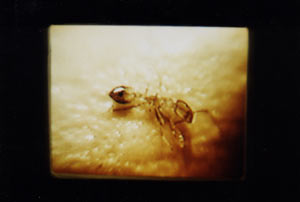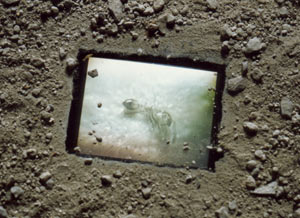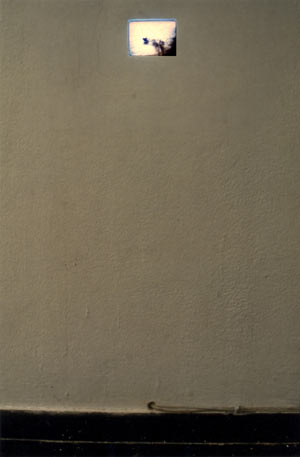Pharaoh ants
Video about
living in urban environment. Video is taken with miniature video camera.
Ant is urban animal and shares our living space in urban environment.
Video is document of last seven minutes of ants life.
Pharaoh ants are one of the most persistent and difficult ants to control. They are small (1.5 to 2 mm) and yellow or pale reddish-brown. Unlike most other ants, pharaoh ants adapt well to nesting indoors. They spread their colonies throughout a building and readily split into smaller colonies when disturbed.
Pharaoh ants
like a wide range of food, which includes syrups, jellies, grease, cake,
and pet foods. They are a serious pest in hospitals, dormitories and apartments.
The pharaoh ant's nature of being scattered about, living in walls and other well protected areas makes them difficult to exterminate.

Pharaoh
Ant Elimination - Indoor Treatment
Pharaoh ant elimination can only be accomplished through an extensive
indoor baiting program. Indoor treatments with residual insecticides will
not eliminate an infestation of these ants. Only about 5% of a Pharaoh
ant colony's workers are out foraging for food at any one time. By attempting
to kill ants with a spray, the remaining 95% of the workers will become
stressed and split into two or more new colonies. This splitting of colonies
among ants is known as budding.
Baits must be place in every area where ants are known to forage. You
also must bait areas where they may possibly forage. In wall voids and
attics, use granular bait. This will ensure that foraging workers from
all colonies within the structure will contact and feed on your bait.
The mobility of the colony and its queens as well as multiple colonies
in one building demands multiple baiting sites. 
In severe infestations of larger buildings, total elimination of Pharaoh
ants has been known to take up to a year. Because of the particular habits
of this pest, your baiting program should extend for several months. Even
after the ants seemed to have been eliminated, continue to place fresh
ant bait in areas known to have been frequented by them.
Because Pharaoh ants tend to trail along edges, place baits in corners
and along edges of door moldings and baseboards. This precise bait placement
ensures that the ants are more likely to find your bait. Placing baits
in the middle of cabinets or walls reduces the chances of the ant pests
finding the bait.
Although the active ingredient and attractants in Maxforce bait are practically
non-toxic to mammals, make sure that children and indoor dogs and cats
cannot get to your bait. Children and pets could possibly choke on the
plastic station. Simply place the baitstations
out of reach of children and pets.

"The Ant" Videoinstalation, instalation view.